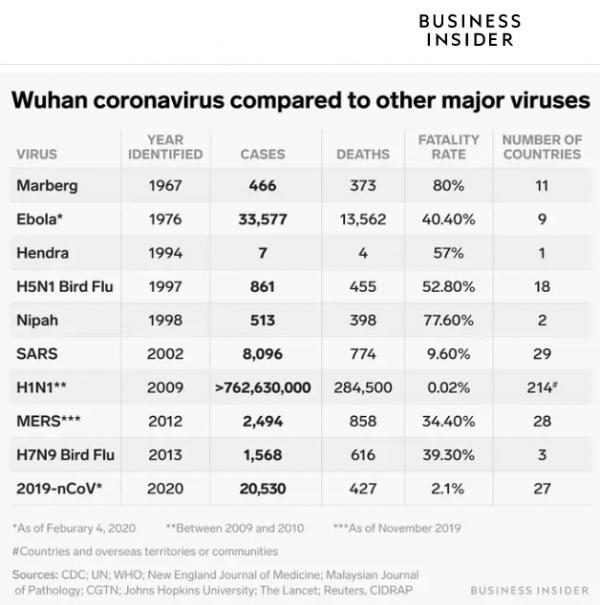2009年初在墨西哥和美国爆发了H1N1流行病毒瘟疫。爆发初期,美国相关部门反应确实及时,疫情也向公众公布了。然而,在公布以后,各级政府并没有采取防止疫情扩散的得力措施,这让瘟疫迅速向全世界扩散。世界卫生组织无奈地在疫情爆发三个月后宣布停止统计疫情发展数据。
下面是H1N1疫情防控的重要时间:
3月28日:第一例被报告的病例; 4月29日:世界卫生组织把疫情警告提高到5级; 6月11日:世界卫生组织又把疫情警告提高到6级,即最高级别; 10月24日:美国总统奥巴马宣布全国紧急状态。 从发现到进入紧急状态,时间长达7个月,并没有对疫区采取封城措施。最终,这个瘟疫扩散到214个国家,造成284500人死亡,数亿人被感染 [1]! 
即使在美国,具备最先进医疗条件的国家,官方机构CDC当时预测这场瘟疫将造成 56 million 人被感染,265000患者住院,12000人死亡,住院患者中的死亡率达12000/265000=4.53% [2]。 "As of mid-March 2010, the U.S. Centers for Disease Control and Prevention (CDC) estimated that about 59 million Americans contracted the H1N1 virus, 265,000 were hospitalized as a result, and 12,000 died."
在发达的美国,瘟疫危害如此大,死亡率高攀至4.53%,那在医疗条件贫乏的国家地区疫情会怎样?可惜的是,面对这场大瘟疫,世界卫生组织已经无法得到准确的统计数据了。
历史的教训,值得每个人铭记。
参考文献
[1] "One chart shows how the Wuhan coronavirus compares to other major outbreaks and pandemics in the last 50 years" ,https://www.businessinsider.com/how-wuhan-coronavirus-compares-to-other-outbreaks-pandemics-2020-1
[2] "2009 flu pandemic in the United States",https://en.wikipedia.org/wiki/2009_flu_pandemic_in_the_United_States
[3] Google查询:世界上到底有多少国家/地区? “The United Nations, for example, recognizes 241 countries and territories. The United States, however, officially recognizes fewer than 200 nations. Ultimately, the best answer is that there are 196 countries in the world.”
|
